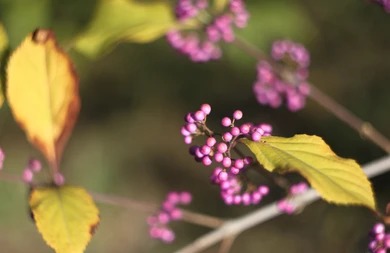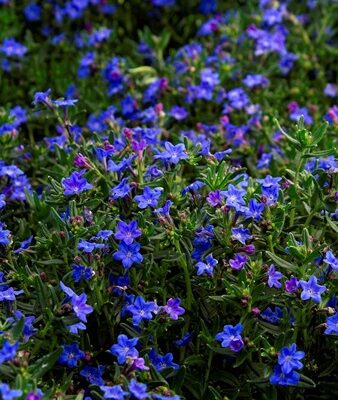How to Grow and Care Beautyberry: Easy Tips
The Beautyberry (Callicarpa americana) is a deciduous shrub native to the southeastern United States. How to grow and care Beautyberry; It typically attains a height and width ranging from 3 to 6 feet, although occasionally it can reach as tall as 9 feet. With a moderate growth rate of approximately 1 to 2 feet per year until maturity, it can be planted during either the fall or spring seasons. How to grow and care Beautyberry; these plants are adaptable to various light conditions, thriving in full sun to partial shade, and although they prefer moist soil, they can withstand moderately dry conditions.
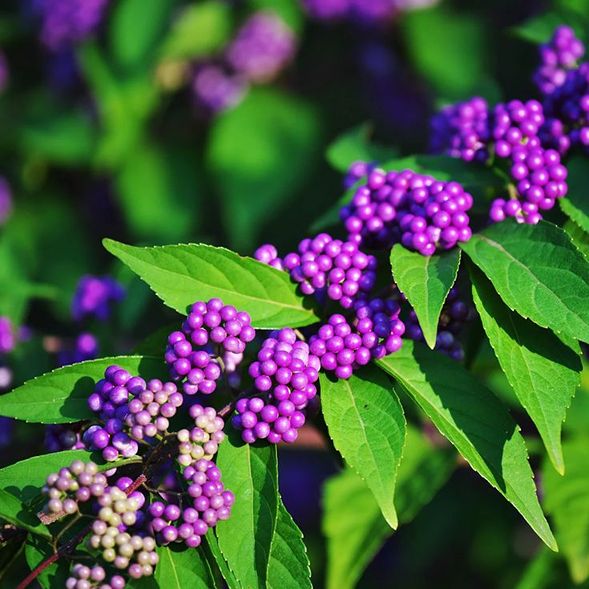
Common Name: American beautyberry, beautyberry, French mulberry
Botanical Name: Callicarpa americana
Family: Verbenaceae
Plant Type: Shrub
Soil Type: Loamy, clay, moist, well-drained
Soil pH: Acidic, neutral
Bloom Time: Spring, summer
Flower Color: Pink, purple, white
Mature Size: 3–6 ft. tall, 3–6 ft. wide
Sun Exposure: Full, partial
Hardiness Zones: 6–10 (USDA)
Native Areas: North America
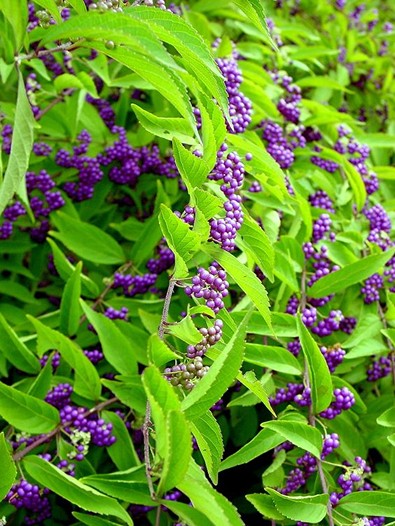
Beautyberry Care
Here are some major care requirements for growing a beautyberry.
- Within beautyberry’s growing zones, native soil is suitable.
- It thrives equally well in full sun or partial shade.
- The plant requires minimal maintenance as it is not prone to pests or diseases.
- During periods without rainfall, ensure to water it adequately.
- As necessary, prune the beautyberry to retain its desired shape.
Light
Beautyberry shrubs thrive in both full sun and partial shade, requiring at least two hours of direct sunlight per day. They are naturally found on the edges of wooded areas, adapting to varying levels of sunlight. How to grow and care Beautyberry; Increased sunlight leads to higher berry production, but it also raises the shrub’s water requirements.
Soil
Beautyberry shrubs favor friable soil, characterized by a crumbly texture, enriched with organic matter, and ensuring proper drainage. They thrive best in slightly acidic to neutral soil pH, resembling the conditions of the forest floor where they naturally flourish. How to grow and care Beautyberry; Nonetheless, they demonstrate adaptability to various soil types, including clay, with the exception of severely nutrient-deficient soils.

Water
While these plants prefer moist soil, they exhibit tolerance to somewhat dry conditions. Ideally, providing approximately 1 inch of water per week is recommended. However, if your shrub is situated in a particularly sunny location, experiences hot weather, or encounters limited rainfall, providing additional water would likely be beneficial for the plant.

Climate and Moisture Level
How to grow and care Beautyberry; Beautyberry shrubs flourish within their hardiness zones without specific temperature or humidity demands. They exhibit excellent heat tolerance, granted that their moisture requirements are adequately fulfilled.
Fertilizer
In general, these shrubs do not require fertilizer unless the soil is exceptionally nutrient-poor. Adding a shovelful or two of compost in the spring can promote beautyberry’s growth. However, excessive fertilizer application may lead to reduced berry production.

Types of Beautyberry
There are various types of American beautyberry (Callicarpa americana), which include:
‘Alba’: This beautyberry shrub is distinguished by its white berries.
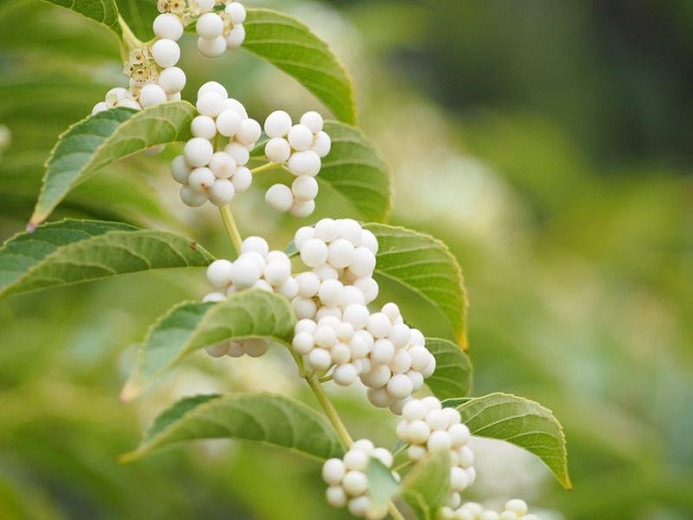
‘Lactea’: This beautyberry also displays white fruits.
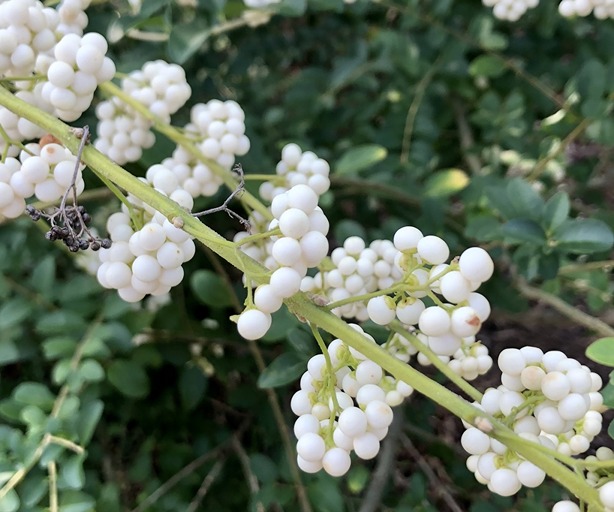
‘Welch’s Pink’: This shrub is renowned for its pink berries.

How to Prune
Beautyberry shrubs bloom on new wood, making late winter pruning for shaping purposes a common practice before new growth emerges. While the berries can bring vibrant color to your winter garden and may persist throughout the winter months, it’s still advisable to proceed with pruning, even if it means sacrificing some berries. This approach contributes to improved berry growth in the future.
In the northernmost regions of their growing zones, these shrubs are frequently pruned down to approximately 1 foot above the ground each winter. This measure is taken as the cold weather can render the old growth unappealing.
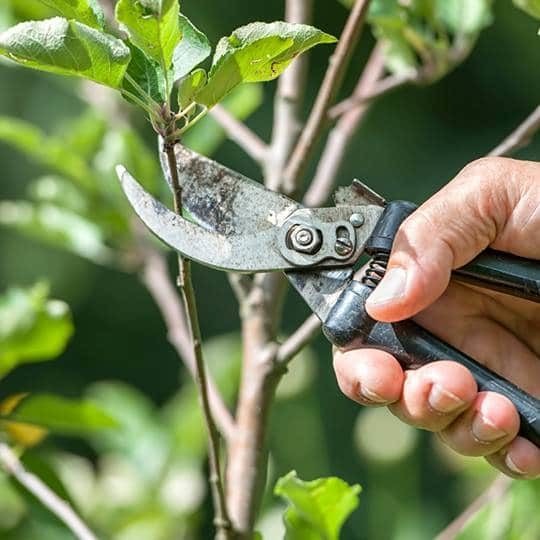
How to Propagate
The beautyberry shrub has a tendency to self-seed, and you can propagate it by carefully removing volunteer seedlings that emerge around the plant and transplanting them to a different area. Additionally, you can propagate the shrub through cuttings taken during the late spring or early summer. This simple and cost-effective method allows you to propagate more of a preferred shrub variety. Here’s how it’s done:
- Take a 6-inch long section from a healthy stem, avoiding old woody parts.
- Remove any leaves on the lower half of the cutting.
- Dip the cut end in rooting hormone, and place it in a small container filled with moist soilless potting mix.
- Cover the container with a clear plastic bag to retain moisture, and position it in an area with bright, indirect light.
- Ensure the soil remains consistently moist but not waterlogged. As soon as you observe significant foliage growth, it indicates root development, which usually takes about two to three months.
- At this point, the new shrub is ready for transplantation.

How to Grow From Seed
Beautyberry seeds exhibit slow and somewhat erratic germination. To enhance the likelihood of successful germination, begin with a generous quantity of seeds.
- During the fall, collect seeds from fully ripe berries, then allow them to air-dry before storing them in a cool, dark place.
- In late winter, soak the seeds in cool water for 24 hours to soften the seed coat. Proceed by filling 4-inch pots or seedling trays with a seed-starting mix, and slowly water the soil until it becomes evenly moist.
- Gently place about six seeds in each pot, covering them lightly with soil.
- Position the pots indoors near a bright window, ensuring the soil remains consistently moist but not overly saturated. Be patient, as germination may take up to three months.
- Once the seedlings emerge, retain only the strongest one in each pot and trim off the others using scissors—avoid pulling them out, as it could damage the roots of the remaining seedling.
- When the root system of the new beautyberry fills the pot, noticeable by roots growing out of the drain holes, it is now prepared for transplantation outdoors.
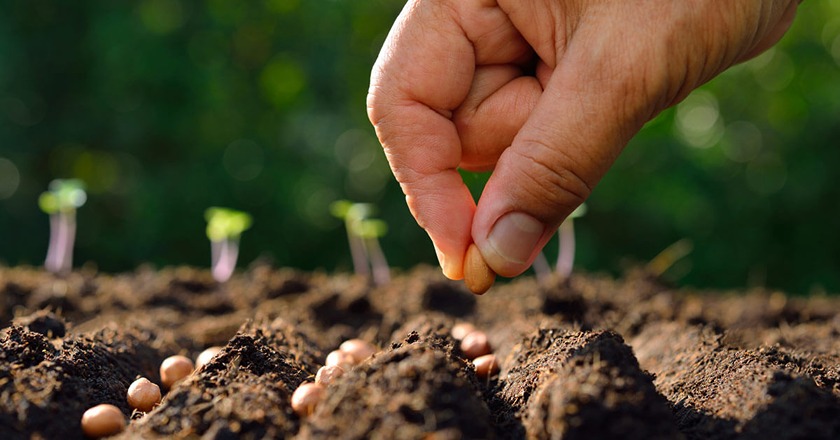
Overwintering
Apart from the possibility of pruning your shrub close to the ground, typically, no special winter treatment is required. However, you can choose to add a layer of mulch around the base of the shrub to maintain consistent root temperature.
How to Get Bloom
Beautyberry flowers may be considered largely insignificant, yet they play a crucial role in the shrub’s renowned fruit production. Appearing in the spring and summer, these flowers come in varying shades of purple, pink, and white, forming clusters with each bloom spanning less than an inch across. If your beautyberry isn’t blooming, insufficient sunlight or inadequate watering could be the likely reasons. However, under favorable conditions, typically no special care is needed during the shrub’s bloom period.
Common Problems
Beautyberry shrubs rarely encounter problems when grown in their preferred environment. However, on occasion, certain conditions may lead to atypical growth.
Brown Leaves
During the fall, beautyberry foliage typically transforms into a golden yellow hue. Nevertheless, frost can lead the leaves to turn directly from green to brown before shedding for winter. If you observe browning leaves in the fall, before the usual yellow foliage, frost might be the cause. However, rest assured that the foliage should return healthy in the following spring.
